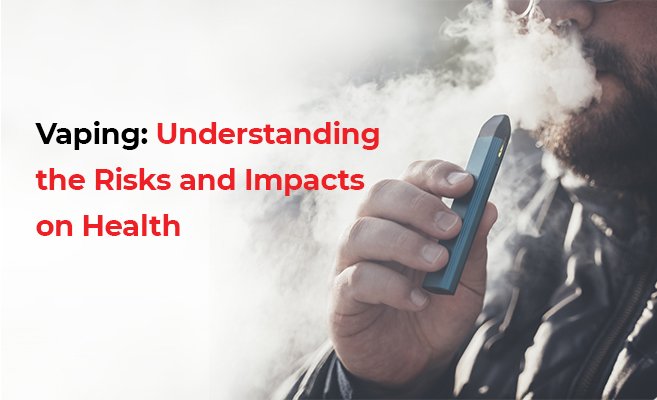
The Effects of Vaping on Lung Health: Understanding the Risks and Impact
Vaping, once touted as a safer alternative to traditional smoking, has increasingly come under scrutiny for its potential health risks, particularly concerning lung health. As the popularity of vaping devices, including e-cigarettes and vape pens, continues to rise among both adults and youth, understanding the effects of vaping on the lungs has become a critical concern.
What is Vaping?
Vaping involves inhaling and exhaling aerosol, often referred to as vapor, produced by an electronic vaping device. These devices typically contain a battery-powered heating element that vaporizes a liquid solution (e-liquid or vape juice) composed of nicotine, flavorings, and other chemicals. Unlike traditional cigarettes, which burn tobacco to produce smoke, vaping devices heat liquid to create an aerosol that users inhale into their lungs.
Chemical Composition and Inhalation
The composition of vape aerosols can vary widely depending on the specific device, e-liquid ingredients, and vaping habits of the user. Common components of vape aerosols include nicotine, propylene glycol, glycerin, flavorings, and potentially harmful chemicals such as formaldehyde and acrolein. These chemicals can have different effects on lung tissue when inhaled, especially with long-term or frequent use.
Impact on Lung Function
Respiratory Irritation
One of the immediate effects of vaping on the lungs is irritation of the respiratory tract. The inhalation of aerosols containing chemicals like propylene glycol and glycerin can lead to irritation of the airways, causing symptoms such as coughing, throat irritation, and shortness of breath. While these symptoms may not be severe for all users, they can contribute to discomfort and reduced lung function over time.
Inflammatory Response
Research suggests that vaping can trigger an inflammatory response in the lungs. The inhalation of chemicals and fine particles from vape aerosols can lead to inflammation in lung tissue, similar to the inflammatory response observed in cigarette smokers. Chronic inflammation may contribute to respiratory conditions such as chronic bronchitis and could exacerbate pre-existing lung diseases like asthma and COPD (Chronic Obstructive Pulmonary Disease).
Nicotine Addiction
Nicotine, a highly addictive substance present in most vaping products, poses additional risks to lung health. Nicotine can constrict blood vessels and increase heart rate, potentially placing strain on the cardiovascular system. While nicotine itself is not a lung irritant, its addictive nature can lead to continued use of vaping devices, prolonging exposure to other harmful chemicals found in aerosols.
Long-Term Effects and Emerging Risks
Lung Damage
Emerging research suggests that long-term vaping may contribute to serious lung damage. Studies have identified cases of vaping-related lung injury, often referred to as EVALI (E-cigarette or Vaping Product Use-Associated Lung Injury). EVALI can cause severe respiratory symptoms such as coughing, chest pain, and difficulty breathing, and in some cases, may require hospitalization.
Risk of Respiratory Diseases
The long-term impact of vaping on respiratory health remains an area of active research. While it’s clear that vaping introduces potentially harmful chemicals into the lungs, the full extent of its contribution to respiratory diseases such as lung cancer and chronic lung conditions is still being studied. Early findings suggest that vaping may increase the risk of developing these conditions, particularly when combined with other risk factors such as smoking or environmental exposures.
Conclusion
In conclusion, while vaping has been marketed as a safer alternative to smoking traditional cigarettes, its impact on lung health is increasingly being questioned. The inhalation of aerosols containing nicotine, flavorings, and other chemicals can lead to respiratory irritation, inflammation, and potentially serious lung damage over time. As research continues to uncover the long-term effects of vaping, it’s important for users, healthcare providers, and policymakers to remain vigilant about the potential risks and to promote informed decision-making regarding vaping and lung health.